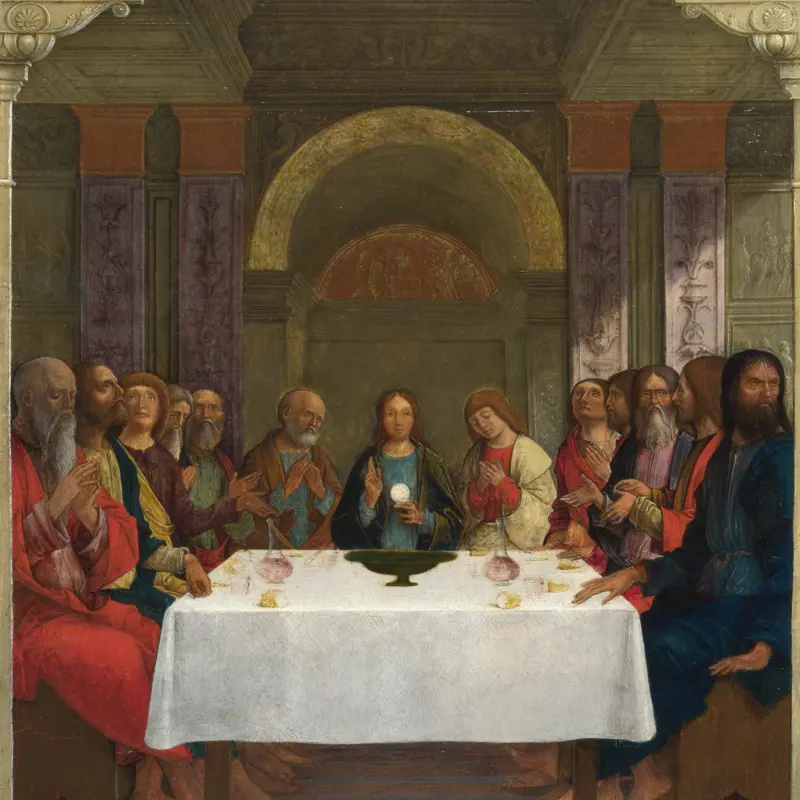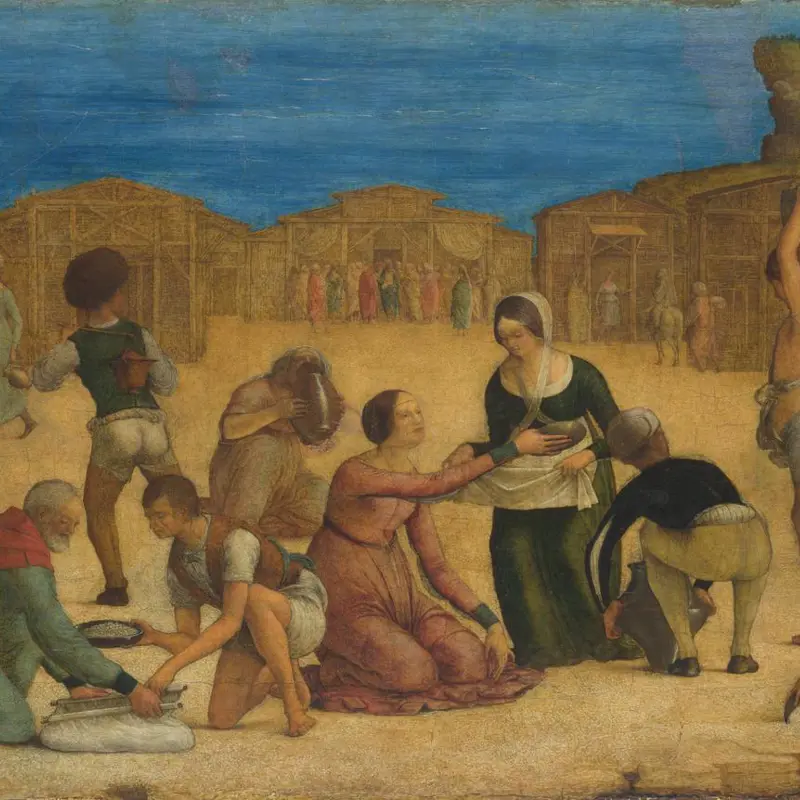Ercole de' Roberti, 'The Este Diptych', about 1490
About the group
Overview
The Adoration of the Shepherds and The Dead Christ were originally joined with hinges to form a diptych – an object made up of two painted panels – that could open and close, creating a visual prayer book. It probably belonged to Eleonora of Aragon, Duchess of Ferrara. An inventory of her possessions records just such a work, covered in cherry-red velvet; traces of red velvet remain on the back of these two pictures. The images portray the beginning and end of Christ’s life but the focus is on his body.
Eleonora was particularly devoted to the Corpus Christi (‘the body of Christ’). She played a prominent role in the annual feast that celebrated the institution of the Eucharist at the Last Supper, when Christ instructed his disciples to drink wine and eat bread in commemoration of his blood and body. She was closely connected to a religious group that focused their prayer upon the Corpus Christi and was buried in their church in Ferrara.
Key facts
Details
- Full title
- The Este Diptych
- Artist
- Ercole de' Roberti
- Artist dates
- Active 1479; died 1496
- Date made
- About 1490
- Inventory number
- NG1411
- Collection
- Main Collection
About this record
If you know more about this work or have spotted an error, please contact us. Please note that exhibition histories are listed from 2009 onwards. Bibliographies may not be complete; more comprehensive information is available in the National Gallery Library.
Works in the group
-
This small panel is painted in fine detail, resembling a precious painted miniature or illuminated manuscript. It formed the left side of a diptych (a work of two parts) joined with a central hinge; the other side showed The Dead Christ. Joseph, the Virgin Mary and a shepherd in torn clothes pray...
-
This little picture formed the right side of a diptych (a work of two parts). It was joined with central hinges to The Adoration of the Shepherds. Ercole made this for the Duchess of Ferrara, Eleonora of Aragon, when he was court painter at Ferrara. Eleonora’s personal prayer centred on the Corpu...





